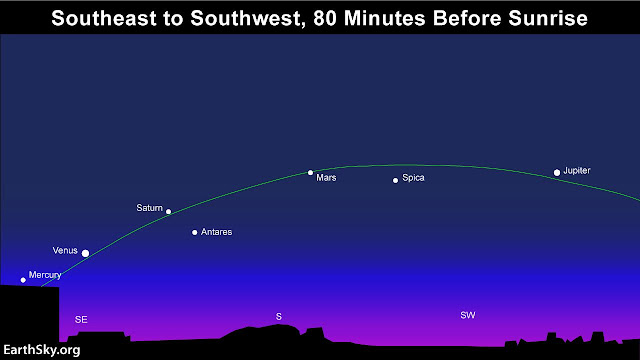The planets visible to the naked eye from Earth, in order of their proximity to the Sun, are:
- Mercury
- Venus
- Mars
- Jupiter
- Saturn
Uranus and Neptune are also visible to the naked eye, but they are much fainter and more challenging to spot without the aid of binoculars or a telescope.
The best way to spot these planets is to look for them during their respective "oppositions" or "conjunctions" with the Sun. Here's what these terms mean:
Opposition: A planet is in opposition when it is on the opposite side of the Earth from the Sun. During opposition, the planet rises in the east as the Sun sets in the west and is visible throughout the night. This is the best time to observe the planet as it will be at its brightest and highest in the sky.
Conjunction: A planet is in conjunction when it appears close to the Sun in the sky. There are two types of conjunctions:
- Superior Conjunction: The planet is on the opposite side of the Sun from Earth.
- Inferior Conjunction: The planet is between the Earth and the Sun.
During conjunctions, the planet may be difficult or impossible to see as it gets lost in the Sun's glare.
The positions of the planets in the sky change throughout the year due to their orbits around the Sun. Websites, astronomy apps, and sky charts can help you determine the current positions of the planets and when they will be visible from your location. Additionally, seeking out dark skies away from light pollution will enhance your chances of spotting these celestial wonders. It's important to be patient and have realistic expectations, especially when trying to observe the fainter planets like Uranus and Neptune.


No comments:
Post a Comment